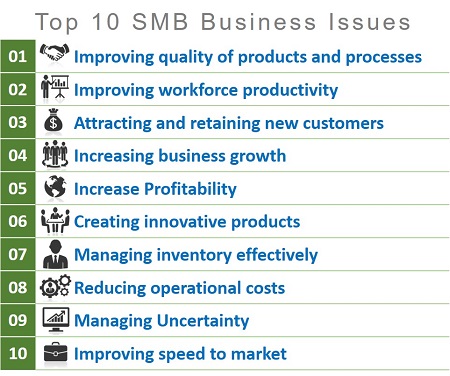We are in the midst of a transition from an IT industry shaped by small decision making units (DMUs) comprised of IT professionals to an industry that must respond to the varied needs of BDMs and ITDMs. This makes for a very complex selling environment; many IT suppliers would no doubt like to have ‘the genie hop back into the bottle,’ as many members of their sales and marketing teams lack the skills and understanding needed to sell to BDMs.
Techaisle research on SMB and Midmarket buyers journey and decision-making shows that ITDMs and BDMs have differences in ‘care-abouts, are focused on applying IT to different business objectives, have different perceptions of success measures, and use different information sources. The data is not only helpful in building relevant marketing messages, but also serves to underscore the complexity of working with a diverse DMU. This DMU becomes further complicated with the presence of IT conversant business specialists (embedded IT staff), increasingly residing within line of business units, reporting to business, and away from IT.
- Business management has seized a much greater role in technology acquisition, deployment & management than IT management – varying from 3.4X in “needs identification” to 2.0X in “solution evaluation & selection”
- Within small businesses, business management plays a more influential role than IT in five out of nine stages of technology solution adoption
- Within mid-market businesses, role of business management is predominant in the first three stages of decision making (needs identification to solution options), equal to IT in the next two (solution evaluation & selection) and substantially higher than IT in the last two stages (determining solution effectiveness and optimization)
- In nearly 1/4th of small businesses and slightly over 1/3rd of medium businesses, technology specialists (embedded IT staff) are employed within Business Units not reporting to IT management. In nearly 50 percent of midmarket firms that have IT specialists, they are the primary decision makers
- Determining the need for new cloud business applications is the prerogative of business management. The balance of authority within SMBs is nearly 7:1 in favor of business management except in the case of mid-market businesses where it is nearly 2:1
- Ad-hoc purchase and deployment of new cloud business applications is prevalent within 22 percent of mid-market businesses
- In 15 percent of SMBs budget for new business application is usually created at the time of ad hoc decisions for purchase to meet business needs













